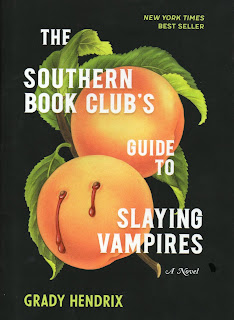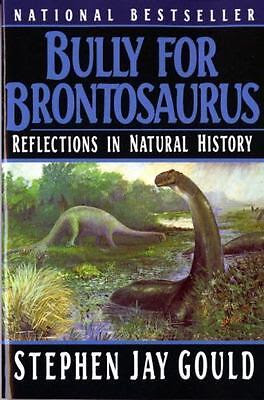First impressions review: The Southern Book Club's Guide to Slaying Vampires, by Grady Hendrix
Holy crap, this book surprised me in the best way! Between the slightly goofy-sounding title and the tone of the cover blurb, I was expecting a light horror-comedy in a mint-juleps and magnolia version of the South, possibly with some ill-advised vampire romance. And that might have been all right, but that is not what this book is. What it is is basically a Southern Gothic thriller with a bit of dark humor, that happens to involve a vampire1.
Patricia Campbell is a housewife living in a relatively affluent suburb of Charleston, South Carolina in the 1980s. She is going out of her mind with frustration and boredom, so she joins a club of similarly afflicted ladies who like to get together and read true crime and murder mysteries. It is around that time that things start to go a bit strange in the neighborhood. Patricia finds an elderly neighbor snacking on a raccoon out by the garbage bins and then the woman pounces on her and bites off her earlobe before someone pulls her off. The old woman dies, and Patricia - burdened with perhaps a bit too much of a sense of politeness - goes to take a casserole to the neighbor's nephew, who has recently come into town. She gets a bit of a fright, as at first he doesn't seem to be breathing and then comes round suddenly. To make up for her gaffe in wandering into his house and trying to give him CPR, she helps him set up a bank account - he seems to have lost his driver's license, and has a medical condition that makes it hard for him to see in daylight - and invites him in to have ice cream with her family. Everyone seems to like him...except Patricia's slightly senile mother-in-law, Miss Mary, who keeps staring at James Harris and muttering, like she's trying to place his face.
One of the things I particularly appreciated about this book is that it did not shy away from the darker parts of life in the South (or in the suburbs). In fact, the vampire deliberately uses the structural inequalities - racism, sexism, class differences - and the temptation to look after oneself and one's immediate family over others to his advantage. For instance, it is no coincidence that Mrs. Greene, the only African American main character, who helped take care of Miss Mary before an unfortunate incident with a tidal wave of rats, is the first to know that children are being attacked. They are being taken in her neighborhood - and the police aren't listening. If they do anything, they blame the parents. When the vampire came to Miss Mary's hometown in her youth, he made friends with all the menfolk first, urging them to expand their moonshine production, making them more money than they ever thought they'd see. When they did finally start to get concerned about the dead kids, he whispered in their ears about a certain black man...who they buried alive under a peach tree. And then the vampire vanished, the moonshine market dried up, and Miss Mary's father drank himself to death.
The pattern is repeating now, with James Harris insinuating himself into the inner circle of the town's most respectable white men, getting them to invest in a real estate deal. So when the book club ladies try to muster their evidence that something is seriously wrong with Mr. Harris2, their own husbands turn against them. They have different levers; one woman's husband is revealed in that moment to be secretly abusive, another uses scripture as his bludgeon, another is a psychologist who knows perfectly how to gaslight. Considering the blood and murder elsewhere, that was a particularly chilling scene - shades of 'Stepford Wives'. Because who is going to believe some silly housewives who probably just have too much time on their hands to make up stories? And for a while it seems that their resolve breaks. But as the threat creeps closer and closer to home, the women take matters into their own hands.
There is a trope known as 'our vampires are different', which means that each author tends to put their own spin on the vampire mythos. Hendrix certainly does that. His vampire can control animals, but he isn't killed by sunlight - even if he doesn't like it - and he eats and drinks enough to pass as normal in that respect. He doesn't have fangs, per se, but rather a special foldable blood-drinking organ. He is strong and good at climbing, but he can't fly or turn into a mist. He is almost demon-like in his talent for temptation, bringing out the meaner, more selfish side of people even when he doesn't strictly have to do so for his own ends. So the book club ladies will have to interpret the legends cautiously when trying to figure out how to get rid of him.
I wondered while reading this book if it might have been better if the title didn't let you know there was going to be a vampire at all; if you just had to figure it out alongside Patricia. Based on her reading, she first thinks 'serial killer' - not that she's exactly wrong about that, technically speaking. Readers would probably be clued in a little earlier than she is, what with the "sleeping without breathing during the day and not liking sunlight" thing...just not immediately like you are if you are waiting to spot the vampire. It would certainly be a different experience, though after finishing the book I concluded it wouldn't necessarily be better. After all, for at least 2/3 of the book Patricia knows James Harris is some kind of not-quite-human monster...the thrills come from her trying to figure out what to do about that while keeping her family safe. And I suppose it would be harder to market the story if that weren't clear; those who like realistic thrillers might not be, well, thrilled to find a vampire unexpectedly popping up partway through!
1. It was a birthday present. Shout-out to my husband for good book instincts!
2. Patricia has sold them on 'drug dealer', figuring her 'vampire' suspicions wouldn't go over well. But nothing scared middle-class white ladies in 1993 like the thought of drug dealers in their town! And after all, he does seem to leave track marks on his victims, who act sleepy and weird. So it is sort of true...from a certain point of view.
Overall recommendation: If you can take a bit of gore with your domestic drama, and a dose of some real-life evils with your vampire fiction, this book is well-worth reading. It is thick - around 400 pages - but it is a gripping read; I tore through it in two days.


